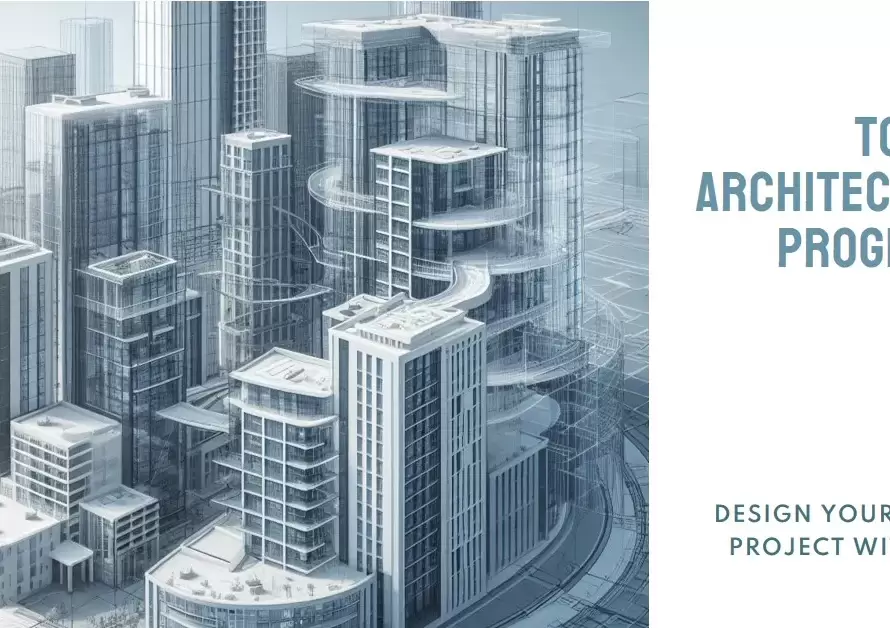
Table of Contents
- Introduction:
- Streamlined User Interface: A New Era of Usability
- Enhanced Collaboration Tools: Bridging Distances
- Advanced 3D Modeling Capabilities: Bringing Ideas to Life
- Parametric Design: Automating Precision
- Integrating AI and Machine Learning: The Future of Design
- Reality Capture: Bridging the Gap Between Physical and Digital
- Improved Data Management: Streamlining Workflows
- Customization and Automation: Tailoring AutoCAD to Your Needs
- Sustainability in Design: Building a Greener Future
- Conclusion: The Ever-Evolving Landscape of AutoCAD
Introduction:
AutoCAD, a staple in the realm of computer-aided design (CAD), has continually evolved to meet the growing demands of 3D modeling. With each new version, AutoCAD introduces innovative features that significantly enhance the capabilities of designers and engineers. This post delves into the latest advancements in AutoCAD and how they are revolutionizing the field of 3D modeling.
Streamlined User Interface: A New Era of Usability
AutoCAD’s user interface has undergone substantial improvements, making it more intuitive and user-friendly. The ribbon-based layout, customizable workspaces, and contextual tabs streamline the design process, allowing users to access tools and commands effortlessly.
In addition, AutoCAD’s interface now supports high-resolution displays, providing clearer and sharper visuals. This enhancement is particularly beneficial for detailed 3D modeling, where precision is paramount. As a result, designers can work more efficiently and accurately, reducing the time spent on navigating the software.
Enhanced Collaboration Tools: Bridging Distances
Collaboration is crucial in today’s interconnected world. AutoCAD’s advancements in cloud-based collaboration tools facilitate seamless teamwork, irrespective of geographical boundaries. The introduction of AutoCAD Web and Mobile Apps allows users to view, edit, and share designs on the go.
Moreover, the integration with Autodesk BIM 360 enables real-time collaboration on projects, ensuring that all stakeholders are on the same page. These tools enhance communication and coordination, reducing errors and improving project outcomes.
Advanced 3D Modeling Capabilities: Bringing Ideas to Life
AutoCAD’s 3D modeling tools have become more powerful and versatile, allowing designers to create complex geometries with ease. The addition of new commands and features, such as the Solid, Surface, and Mesh tools, expands the possibilities for creating detailed and intricate designs.
Furthermore, the enhanced rendering capabilities in AutoCAD provide photorealistic visuals, helping designers present their ideas more effectively. These advancements not only improve the design process but also aid in better visualization and decision-making.
Parametric Design: Automating Precision
Parametric design is a game-changer in the field of 3D modeling. AutoCAD’s parametric tools enable designers to create models that automatically adjust to changes in parameters, ensuring consistency and precision. This feature is particularly useful in scenarios where design modifications are frequent.
The use of constraints and relationships between objects allows for more controlled and accurate designs. Consequently, parametric design reduces the risk of errors and enhances the overall efficiency of the modeling process.
Integrating AI and Machine Learning: The Future of Design
AutoCAD is embracing artificial intelligence (AI) and machine learning to enhance its capabilities. These technologies assist in automating repetitive tasks, optimizing workflows, and predicting design issues before they arise.
For example, the use of generative design, powered by AI, allows designers to explore multiple design alternatives based on specified constraints and goals. This approach not only saves time but also leads to innovative and optimized solutions that may not be apparent through traditional methods.
Reality Capture: Bridging the Gap Between Physical and Digital
The integration of reality capture technologies in AutoCAD, such as point cloud support, has revolutionized the way designers approach 3D modeling. These tools enable the accurate capture of real-world environments and objects, which can then be incorporated into digital models.
Reality capture enhances the accuracy and realism of 3D models, making them more reflective of actual conditions. This is particularly beneficial in fields such as architecture and construction, where precise measurements and details are crucial for project success.


Improved Data Management: Streamlining Workflows
Effective data management is essential for the smooth operation of any project. AutoCAD’s advancements in data management tools facilitate better organization and retrieval of project information. Features such as the Autodesk Vault integration ensure that all project files are stored securely and are easily accessible.
These tools also support version control, ensuring that all team members are working with the most up-to-date information. As a result, data management improvements reduce the risk of errors and enhance overall project efficiency.
Customization and Automation: Tailoring AutoCAD to Your Needs
AutoCAD’s customization capabilities allow users to tailor the software to their specific needs. The use of AutoLISP, Visual Basic for Applications (VBA), and .NET enables the creation of custom scripts and applications that automate repetitive tasks and streamline workflows.
Additionally, the introduction of the AutoCAD API (Application Programming Interface) allows for deeper integration with other software and systems. This level of customization ensures that AutoCAD can adapt to the unique requirements of any project or industry.
Sustainability in Design: Building a Greener Future
Sustainability has become a key consideration in design and engineering. AutoCAD’s advancements support sustainable design practices through tools that facilitate energy analysis, material selection, and lifecycle assessment.
By incorporating sustainability features, AutoCAD helps designers create more environmentally friendly and resource-efficient designs. These tools not only contribute to a greener future but also align with the growing demand for sustainable practices in the industry.
Conclusion: The Ever-Evolving Landscape of AutoCAD
AutoCAD’s continuous advancements are testament to its commitment to innovation and excellence in 3D modeling. From enhancing usability and collaboration to integrating cutting-edge technologies like AI and reality capture, AutoCAD remains at the forefront of the design world.
As we look to the future, these advancements promise to further revolutionize the field of 3D modeling, empowering designers and engineers to bring their visions to life with greater precision and efficiency. The evolution of AutoCAD is a journey of constant improvement, ensuring that it remains an indispensable tool for professionals across various industries.


